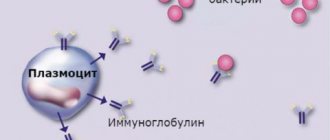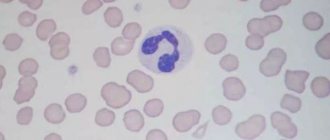Normal indicators
Normal platelet levels are 13-43%; in some cases, this number can be adjusted if autoimmune diseases or chronic diseases occur. The norm differs for people of different age groups and looks like this:
- for adult women and men, the platelet rate is 80-320x109/l;
- newborns and infants have an unstable indicator from 180 to 490 × 109/l;
- in the first year of life, the platelet level in children is 180–400×109/l;
- from 1 to 6 years the norm is 160–390 × 109/l;
- from 7 to 12 years the norm is 16–380 × 109/l;
- in adolescence, the norm is 160–360 × 109/l and gradually approaches the adult level.
If there are differences from the above norms, additional diagnostics are necessary, as this indicates pathological processes in the patient’s body
It is very important to note that different laboratories use different chemical reagents and equipment, so it is likely that the results of the same patient may differ in different laboratories. That is why, next to a person’s current indicators, acceptable normal limits are indicated.
P-LCR norms in blood tests
For any age and gender, P-LCR in the blood is considered normal at values from 13 to 43%. Exceptions may be cases with patients suffering from chronic diseases, patients with congenital cases of pathologies. The doctor is obliged to take into account these deviations from normal norms and, when prescribing treatment, draw up a special course. Changes in norms occur with age:
- The norm for adults is considered to be a value from 180 to 320x109/l,
- in a newly born baby from 180 to 490x109/l,
- children under one year old show a value from 180 to 400x109/l,
- from one to six years the norm is from 160 to 390x109/l,
- from seven to twelve years the normal value is from 16 to 380x109/l,
- for teenagers, values from 160 to 360x109/l are considered normal.
If the P-LCR indicator is high, it should be understood that the number of large platelets in the blood has increased. When interpreting the results of a blood test for this indicator, specialists take into account the patient’s health status and chronic problems.
Important! When studying platelets on P-LCR, various reagents are used, which may vary by manufacturer, which affects the results.
Different medical institutions may obtain different results from the same biological material.
Reasons for the decline
The causes of low platelets may be hidden in chronic kidney disease, malaria and leukemia. Platelets in the blood decrease due to heavy metal poisoning, as well as after chemotherapy procedures. The reasons for decreased indicators may also be hidden in preeclampsia in pregnant women, cardiac surgery, side effects of drug therapy, alcohol abuse, and lack of vitamin B12 and folic acid.
In medicine, a decrease in platelets below normal is called thrombocytopenia. A doctor can make this diagnosis if the platelet count has decreased by more than three times. Like an elevated platelet count, thrombocytopenia has several characteristic signs:
- the presence of blood in urine and feces without urogenital infections that could provoke them;
- pinpoint rash on the skin;
- difficulty stopping bleeding from the nose, gums and bleeding during menstruation in women.
The causes of thrombocytopenia must be eliminated immediately, since even the smallest cut can provoke enormous blood loss and exhaustion of the body, as a result of which the patient dies.
Large platelet ratio value
Platelets are a necessary component of human blood, and they perform an important function: they prevent excessive blood loss due to possible damage to the vessel. The coefficient of large platelets has the ability to increase, and this factor can be influenced by certain reasons, which we will consider in this article.
Platelets are cells or platelets of colorless texture that are responsible for the ability of blood to clot. By implementing the so-called grouping, as a result of which a barrier is formed, they help stop bleeding. The optimal platelet level depends on the age category. So, for example, in an adult the quantitative indicator can vary between 200-400 g/l, and in childhood the limits narrow significantly - 150-180. Platelets in the blood can also change their numbers depending on the season of the year or time of day.
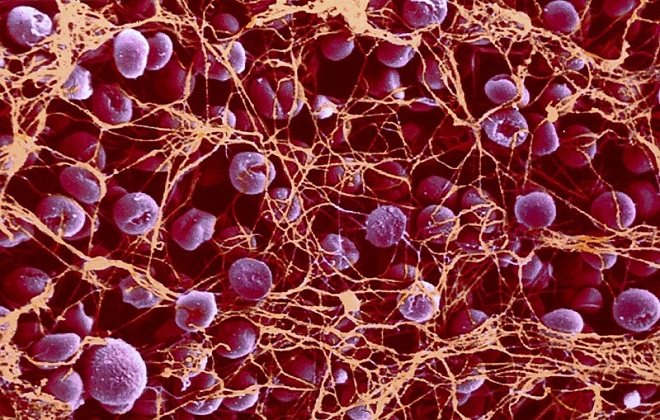
The platelet count is determined by taking a general blood test. Often the patient is diagnosed with thrombocytosis, which means the platelet level is elevated. Deviations of this kind require constant monitoring and immediate treatment. Plt analysis - what does it mean? This is a test to detect blood platelets.
Currently, there are several types of thrombocytosis:
- Primary. It occurs as a result of a negative change in the functionality of bone marrow cells. As a rule, it does not manifest itself in any way; only in rare cases does it cause pain in the head and general malaise. The danger in this case is that such deviations can provoke the appearance of malignant neoplasms.
- Secondary. It is a symptomatic sign of certain diseases, as well as the result of surgical treatment or a side effect as a result of taking certain medications.
Regardless of the species, it is necessary to clarify the reason why the platelet count is increased and their further normalization through various therapeutic methods.
As mentioned earlier, the optimal quantitative level of P LCR is 13-43%, and it does not matter which category the patient belongs to. If a patient is diagnosed with a chronic disease or a congenital form of the disease, then in this situation his condition is taken into account. It is possible that an individual treatment will be formed that is fundamentally different from others.
As for the generally accepted meaning, it may change at the age category level.
The table shows the optimal indicators of the total platelet count depending on age and gender:
The large deviations identified indicate that the number of large blood cells increases significantly. Studying the results obtained implies not only counting the total number of platelets and their compliance with normal values, but also the presence of chronic diseases in the patient (it does not matter in what quantity).
It should be noted that elevated platelet counts may be influenced by the equipment used to test the material and reagents. In this case, the norm that can be accepted is written on the result form next to the indicators related to the patient.
Reasons for the increase
If the test determines that platelet levels are elevated, the doctor may diagnose thrombocytosis, which causes problems with blood flow and makes it difficult for cells to move through the veins and arteries. It is known that with the slightest mechanical damage, regardless of the cause, platelets stick together and form a kind of plug, which clogs the damaged area and prevents bleeding.
If the patient’s tests show an increased level of platelets, then there is a risk of a blood clot forming inside the vessels, which can block the access of oxygen to certain organs and provoke their death. If this happens in the pulmonary artery, then access to the heart is blocked and the person may die from a heart attack; if a blood clot forms in the vessels of the brain, then the patient will have a stroke. There are additional reasons that provoke the formation of a blood clot - these are atherosclerosis and varicose veins, which lead to a narrowing of the lumen in the vessels, and the slightest blockage can be fatal for a person.
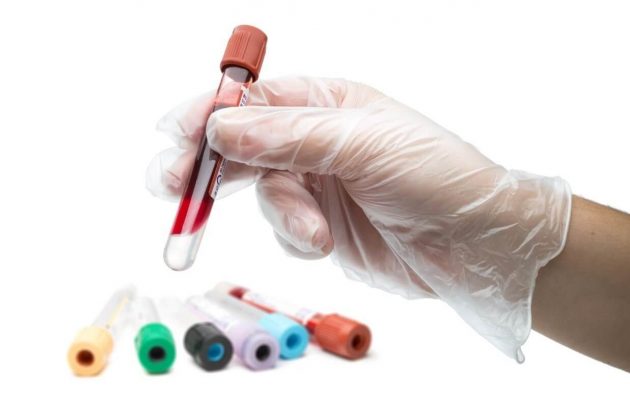
Most patients suffer from thrombocytosis due to reasons such as a malfunction of the bone marrow, where the process of normal hematopoiesis is disrupted. Diseases such as leukemia, leukemia, as well as metastases that have penetrated into the bone marrow from other organs are a clear provocateur of the fact that there is an increased level of platelets in the body. A high level of these blood cells can also provoke poisoning with poisons and chemicals; in rare cases, high levels of platelets cause the consequences of viral diseases in children.
If we analyze the patient’s condition, then in addition to the cause of the disease, we can identify characteristic symptoms that accompany a violation of platelet levels:
- increased sensitivity of the fingertips on the hands, with a light touch the patient feels pain;
- vegetative-vascular dystonia;
- tachycardia;
- frequent shortness of breath, sometimes even in a calm state;
- formation of subcutaneous hematomas and bruises;
- itching and bluish discoloration of the skin;
- constant lethargy, decreased performance and weakness in the limbs;
- blurred vision;
- regular nosebleeds; female patients may experience heavy menstruation.
As a rule, only two or three symptoms appear at the same time; the appearance of all the listed signs is unlikely.
Increased value
An increased value of the large platelet ratio means that pathological processes are present in the patient’s body.
Causes
High levels mean that the following diseases may develop:
- thrombocytosis;
- circulatory disorders;
- obstructed blood movement through the vessels.
When a person is injured, large platelets stick together and form a blood clot, which clogs the damaged vessel and prevents bleeding. If a person’s index increases, then there is a risk of a blood clot in the vessel.
It can cut off oxygen supply to organs and cause them to die. If this happens in the lungs, the blood clot will cut off the oxygen supply to the heart and a heart attack will occur. If a blood clot appears in the blood vessels of the brain, it can cause a stroke. The development of a blood clot inside a vessel can cause varicose veins and atherosclerosis, which provoke a narrowing of the lumen of the vessel, and blockage can lead to death.
In most people, thrombocytosis occurs due to problems with the bone marrow, which produces platelets. Also diseases: leukemia, the development of metastases that entered the bone marrow from other body systems can provoke an increase in the number of platelets. This condition is caused by poisoning with chemicals or toxins. Sometimes viral diseases in children lead to an increase in the index.
Symptoms and signs
When the platelet count increases, a person becomes unwell and their general condition worsens.
- excessive sensitivity of the fingertips;
- the appearance of hematomas on the body without the presence of reasons that cause them;
- skin irritation;
- itching;
- bluish skin color;
- weakness;
- lethargy;
- increased fatigue;
- frequent nosebleeds;
- copious bleeding during menstruation.
Treatment
To bring the platelet count back to normal, the underlying disease should be treated. If the patient is quickly prescribed treatment, the index will take on a normal value. If the norm is greatly exceeded, treatment for thrombocytosis and the underlying disease that caused the change in the index may be prescribed.
Patients are prescribed medications such as Anagrelide and Interferon. If the patient has a slight excess of the norm, then he is recommended to go on a diet. The diet should contain foods that cause blood thinning; it is useful to eat fresh onions, tomatoes, tomato juice, and eat salads dressed with olive oil.
When the index for large platelets is elevated, patients are prescribed fish oil. The patient needs to drink 2 liters of water per day, eat foods containing magnesium, and drink natural juices. In severe cases, Prednisolone is used. If thrombocytopenia is severe and threatens the patient’s life, then he is prescribed surgery to remove the spleen.
Large platelet coefficient p lcr
Information about various diseases can be accurately determined by an HGB blood test, the interpretation of which will fully assess the patient’s condition and track the dynamics of recovery.
This is the most common type of clinical examination. Any disease will definitely affect the state of the blood.
Passing through the entire body, its systems and organs, blood will provide detailed information about human health. Basic blood parameters can be determined using modern diagnostic equipment.
Decoding is done using abbreviations in English, which are placed on a special form.
As soon as a patient enters a medical institution, the first thing the doctor prescribes is a blood test.
The fact of the presence of various diseases and their prevention at an early stage depends on timely access to the clinic.
Dizziness, fever, vomiting, upset stomach, various pathologies that are symptoms of many diseases can be determined by doing a blood test and determining whether each indicator is elevated or decreased. The study consists of quantitative determination of blood composition and its deviation from the norm. The studied parameters include:
- RBC count;
- hemoglobin level HGB;
- total white blood cell count WBC;
- platelet count PLT;
- hematocrit HCT;
- erythrocyte sedimentation rate ESR.
Treatment
To normalize platelet levels and their size, treatment is first directed to the primary disease. After eliminating inflammation (pneumonia, hepatitis, parasitic inflammation, etc.), the P-LCR indicator gradually normalizes. In severe cases with significant deviations, the doctor prescribes drug treatment for thrombocytosis. The process is fully controlled, and the effectiveness of treatment is monitored through regular blood tests. The following drugs are used for influence: “Interferon”, “Alkeran”, “Anagrelide”, etc.
Minor deviations from the norm do not threaten the patient’s life. The safest and most gentle treatment in this case is diet. It is recommended to include more foods that can thin the blood in your diet. Fresh garlic and onions are especially useful. Tomatoes and fresh juice from them, salad dressings with apple cider vinegar, fish oil, and olive oil reduce platelets. It is also necessary to include foods rich in magnesium in your diet and drink enough liquid, at least 2 liters per day. Avoid products that thicken the blood.
Causes of elevated platelet count
When an increased level of platelets in the blood is detected, specialists are faced with one of the main tasks: to identify the cause of such deviations. All possible causes of this kind of changes are divided into pathological and physiological. In this case, these include:
- injuries and possible surgical interventions - the body produces a large number of red blood cells, thereby replenishing the lost amount of blood;
- critical days for representatives of the weaker half of humanity - in most cases, such physiological characteristics contribute to the formation of anemia, which in turn provokes the body to actively recover by increasing the number of red blood cells;
- diagnosing atherosclerosis in a patient;
- elevated blood sugar levels (diabetes mellitus).
Another important reason for an increase in platelet levels is the excessive amount of alcohol consumed, since ethyl alcohol can adversely affect the composition of the blood, namely the elimination of platelets
Manifestation of symptoms
If you listen to the so-called “signals” of your body, you can detect the following changes:
- increased sensitivity of the fingertips, which can gradually turn into pain;
- the occurrence of bruises or hemorrhages in the subcutaneous area;
- change in the appearance of the skin (mainly a bluish tint) or a feeling of itching;
- weakness of the whole body, which entails a decrease in overall performance;
- impairment of visual functionality;
- bleeding may be frequent (nasal, intestinal), and women may have heavy periods.
Basically, the above symptoms can appear individually or in pairs, however, individual dysfunctions of the body mean that the patient needs to go to a medical institution to undergo a certain number of relevant tests, identify the cause of platelet level deviations and formulate subsequent therapy.
With elevated P-LCR values, a person physically feels a number of changes in his condition, which are not always clearly manifested against the background of the current illness, but when paying closer attention to his feelings, they can be recorded. In a hospital setting, with regular blood sampling, the attending physician can promptly see a trend toward an increase in the number of large platelets in the blood and take the necessary measures. But the patient should independently monitor the symptoms that may appear with elevated platelet values in the blood:
- excessive sensitivity of the fingertips is possible, such a sensation can even cause pain;
- bruises or bruises may suddenly appear on the body without any reason for their occurrence;
- itching may occur and acquire a bluish tint;
- with a general weakening of the body, lethargy may occur and performance decreases;
- You may experience nosebleeds and periods with heavier bleeding.
Important! All together, the above symptoms do not appear, but if you find at least two or three of them, you should immediately consult a doctor and undergo the necessary tests. Early detection of the problem will allow you to quickly and effectively cope with the disease
Early detection of the problem will allow you to quickly and effectively cope with the disease.
Indicators exceed the norm
Hi all! I want to tell my sad story with an unexpected continuation. I’ll start with myself: I’m a 30-year-old girl with a problematic figure (apple body type), varicose veins on the legs and an always bad mood. Read more..., The purpose of platelets is to stop bleeding from cuts and various open wounds. The platelets successfully connect with each other, and as a result of this gluing, a blood clot appears, which seals the exit of blood from the wound, but if the number of large platelets increases, there is a risk of thrombocytosis, a very dangerous disease. With thrombocytosis, the passage of blood through the vessels becomes difficult, blockages of veins and arteries occur, which can lead to death.
With elevated P-LCR, blood clots can form regularly.
If the patient, in addition to elevated levels of platelets in the blood, also has elevated cholesterol, then a complex situation arises when the vessels, narrowed by plaques of deposited cholesterol, coupled with blood clots, cannot effectively provide oxygen in the blood to various parts of the patient’s body.
As a result, problems with the functioning of the bone marrow can accumulate and develop, which lead to a failure in the formation of blood cells. Thus, leukemia diseases arise, leukemia and tumors develop in the bone marrow. In addition to these indications, exposure to toxic chemicals or viral infections can increase the level of P-LCR.
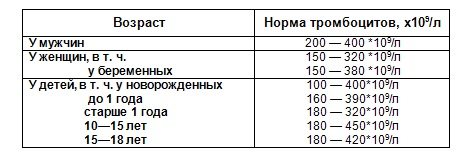
P-LCR reduced
The P-LCR test result should indicate at least 30 percent large or giant platelets. However, as with any survey, some fluctuations are possible. Here they range from 13 to 43 percent. This test is usually ordered when a doctor needs a detailed image analysis of platelets in the blood. It is very common for normal morphology to indicate an incorrect number. P-LCR should always be done on an empty stomach. Only then is a real assessment of the patient’s condition possible. Just because the P-LCR is low doesn't mean we have cause for concern. This result should always be assessed in conjunction with other parameters. The physician must consider the number of plates as well as the average volume. If the other indicators are normal and only the P-LCR is out of bounds, there is no cause for concern. Sometimes this is a natural feature. Some people, for example, have an elevated platelet count throughout their lives, while others have a very low platelet count but all other parameters are within normal limits. Contrary to appearances, this situation is quite common and does not require detailed diagnosis.
Research parameters
After a general blood test and the presence of certain complaints indicated by the patient when communicating with the doctor, an extended blood test is prescribed. Laboratory specialists can not only count the number of platelet cells, but also significantly expand the information by assessing cell size, quality, maturity and activity. An excess of large platelets may indicate disruptions in the functioning of the body and the presence of diseases.
To obtain information about the number of large platelets in the blood, in comparison with normal-sized platelets, laboratory tests are performed that study the P-LCR value. This indicator is expressed as a percentage.
The large platelet count, or P-LCR, can indicate certain problems in the body if its values are abnormal.
Attention! Only a specialist with experience in conducting this type of research can accurately determine the test results and make the correct diagnosis.

P-LCR increased
It is also possible to obtain a larger P-LCR result. Sometimes this is a natural characteristic of a particular person. Then usually a large average platelet volume appears in the blood test, as well as a large variance. Sometimes an elevated P-LCR can also indicate a disease. The most common is autoimmune purpura. Otherwise it is called immune thrombocytopenia. The result of this disease is the destruction of platelets by the body. As a result, many large and huge platelets are formed. Their functionality can be impaired and very often leads to many unwanted effects. If the interpretation of the results indicates an abnormality, the reason for this will need to be found. It may turn out that this is caused by illness. Never ignore abnormalities found during laboratory tests because they very often report diseases that have not yet developed. Therefore there is a much better chance of curing them. Test results should always be interpreted by a specialist who will also be familiar with the patient's overall clinical picture. An accurate medical history is also important. He will provide your doctor with specific information and help you with ideas. Sometimes abnormalities in the results occur, for example, with systemic diseases. Any disturbance in the production and functioning of platelets can be caused by anemia, inflammation, infection, or alcoholism. Very often, their abnormal amount appears in cancer. It is our blood that can be the first to tell us about the state of our body.
General blood test norms for children under 1 year of age
| Index | Age | |||
| newborn | 7-30 days | 1 – 6 months | 6 -12 months | |
| Hemoglobin | 180-240 | 107 — 171 | 103-141 | 113-140 |
| Red blood cells | 3,9-5,5 | 3,6-6,2 | 2,7-4,5 | 3,7-5,3 |
| Color index | 0,85-1,15 | 0,85-1,15 | 0,85-1,15 | 0,85-1,15 |
| Reticulocytes | 3-15 | 3-15 | 3-12 | 3-12 |
| Leukocytes | 8,5-24,5 | 6,5 -13,8 | 5,5 – 12,5 | 6-12 |
| Rod | 1-17 | 0,5- 4 | 0,5- 5 | 0,5- 5 |
| Segmented | 45-80 | 16-45 | 16-45 | 16-45 |
| Eosinophils | 1 — 6 | 1 — 5 | 1 — 5 | 1 — 5 |
| Basophils | 0 — 1 | 0 — 1 | 0 — 1 | 0 — 1 |
| Lymphocytes | 15 — 35 | 45 — 70 | 45 — 70 | 45 — 70 |
| Platelets | 180-490 | 180-400 | 180-400 | 160-390 |
| ESR | 2-4 | 4-10 | 4-10 | 4-12 |
| Index | Age | ||||
| 1-2 years | 2-3 years | 3-6 years | 6-9 years | 9 -12 years | |
| Hemoglobin | 100 — 140 | 100 — 140 | 100 — 140 | 120 — 150 | 120 — 150 |
| Red blood cells | 3,7-5,3 | 3,9-5,3 | 3,9-5,3 | 4,0-5,2 | 4,0-5,2 |
| Color index | 0,75-0,96 | 0,8-1,0 | 0,8-1,0 | 0,8-1,0 | 0,8-1,0 |
| Reticulocytes | 0,3-1,2 | 0,3-1,2 | 0,3-1,2 | 0,3-1,2 | 0,3-1,2 |
| Leukocytes | 6,0 — 17,0 | 4,9-12,3 | 4,9-12,3 | 4,9-12,2 | 4,5-10 |
| Rod | 1 — 5 | 1 — 5 | 1 — 5 | 1 — 5 | 1 — 5 |
| Segmented | 28 — 48 | 32 — 55 | 32 — 55 | 38 — 58 | 43 — 60 |
| Eosinophils | 1 — 7 | 1 — 6 | 1 — 6 | 1 — 5 | 1 — 5 |
| Basophils | 0 — 1 | 0 — 1 | 0 — 1 | 0 — 1 | 0 — 1 |
| Lymphocytes | 37 — 60 | 33 — 55 | 33 — 55 | 30 — 50 | 30 — 46 |
| Platelets | 160-390 | 160-390 | 160-390 | 160-390 | 160-390 |
| ESR | 4-12 | 4-12 | 4-12 | 4-12 | 4-12 |





